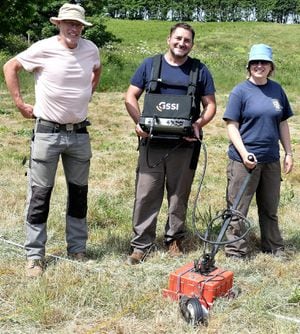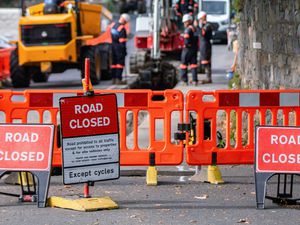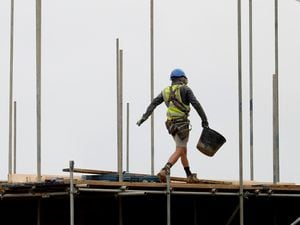Roman settlement could be underneath Longis Common
A ROMAN settlement could have been discovered under Longis Common, according initial assessments of scans.

Dr Rob Fry, from Reading University, spent last week scanning the land using ground-penetrating radar.
States archaeologist Dr Phil de Jersey said they needed to wait a few weeks for the data that was recorded to be analysed, but the initial results were very interesting.
‘Everywhere we looked, there was archaeology,’ he said.
‘He [Dr Fry] felt there were a lot of building walls, stone floors. They are likely to be Roman, but there were items deeper too.’
The sand that covers the common is about two metres deep, and was blown in during the late Roman era, protecting the archaeology.
Dr de Jersey said that in some areas there had been indications of archaeology up to three metres deep, which meant there were likely to also be Iron Age finds.
The team were trying to scan as much of Longis Common as they could, but vegetation made that a challenge.
Dr de Jersey said they were not able to scan the area where there are World War Two graves, but they may look at doing that in the future.
Over the week the team did manage to scan the paddock field, areas close to the Nunnery and the end of the golf course.
Dr de Jersey said once they had the scans analysed, they would start to look at what to do next.
‘I’m sure there is a settlement,’ he aid.
‘Once we see the results, we can see which areas are worth targetting. We got about 4,000 sq. metres covered [with the scans] and there was basically archaeology under all of that. I had hoped [we would find this] but this just shows the importance of this place.’
However the sheer quantities of archaeology does present a challenge.
‘It’s nice problem to have, but it is a problem,’ Dr de Jersey said.
‘If we want to get to the Iron Age archaeology, we have to go through the Roman to get there. So should we preserve the Roman or destroy it to get to the earlier finds? Hopefully we will find some gaps in the Roman.’
Dr de Jersey said they planned to examine the scans carefully to decide where best to put in trenches.
He hoped they would return early next year, before the tourist season, in a bid to keep costs down.
But that is likely to just be the start, with it likely to take many years to discover the scale of the common’s history.





